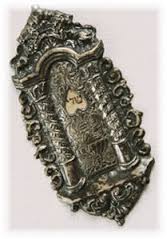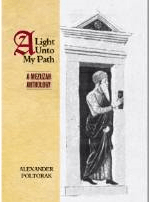The Many Secrets of Mezuzah
This week we study the Torah portion of Eikev, which we will be reading this Shabbat in synagogues. This Torah portion contains the second section of the Shema, Vehayah im shamo’ah, where the commandment of mezuzah is given a second time. Traditionally, this is the week when we discuss mezuzah. Coincidentally, tonight, the twentieth day of Av, is the yahrzeit of Rabbi Levi Yitzchak Schneerson, a prominent Kabbalist and the father of the Lubavitcher Rebbe, Menachem Mendel Schneerson.[1] Rabbi Levi Yitzchak has an interesting short commentary on the word mezuzah. In honor of his yahrzeit, I would like to expound upon and expand his commentary. The sages of the Talmud say that forty days before a fetus is formed, it is announced in heaven that this child is going to be married to [...]






